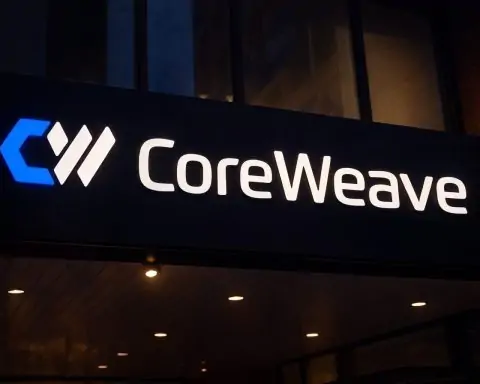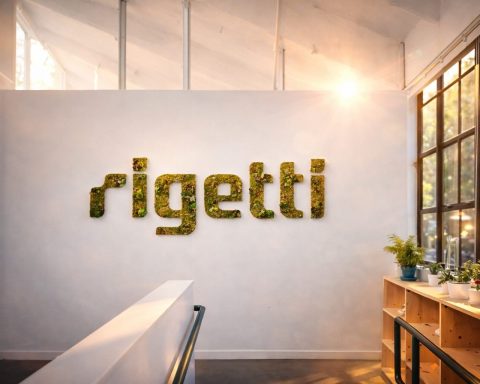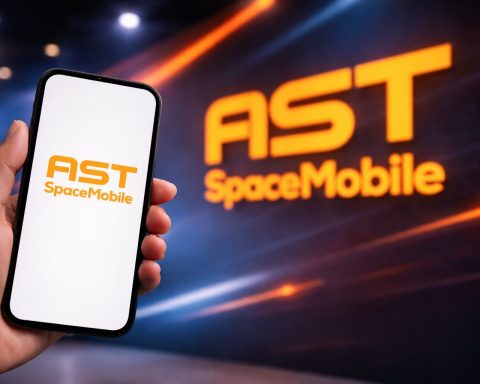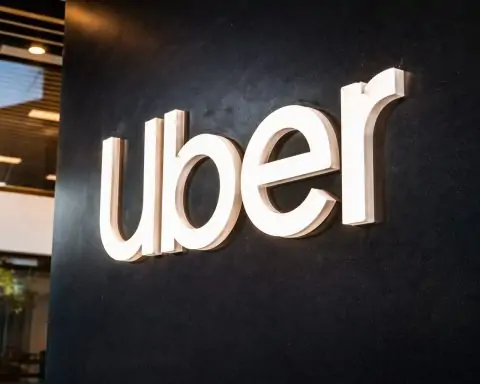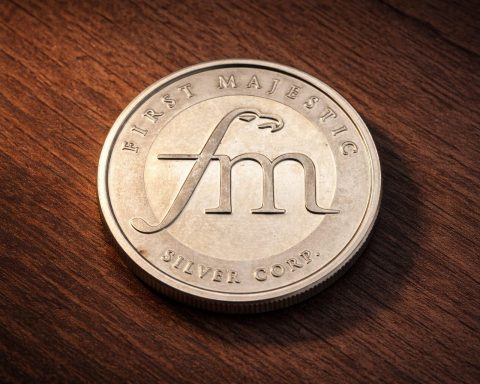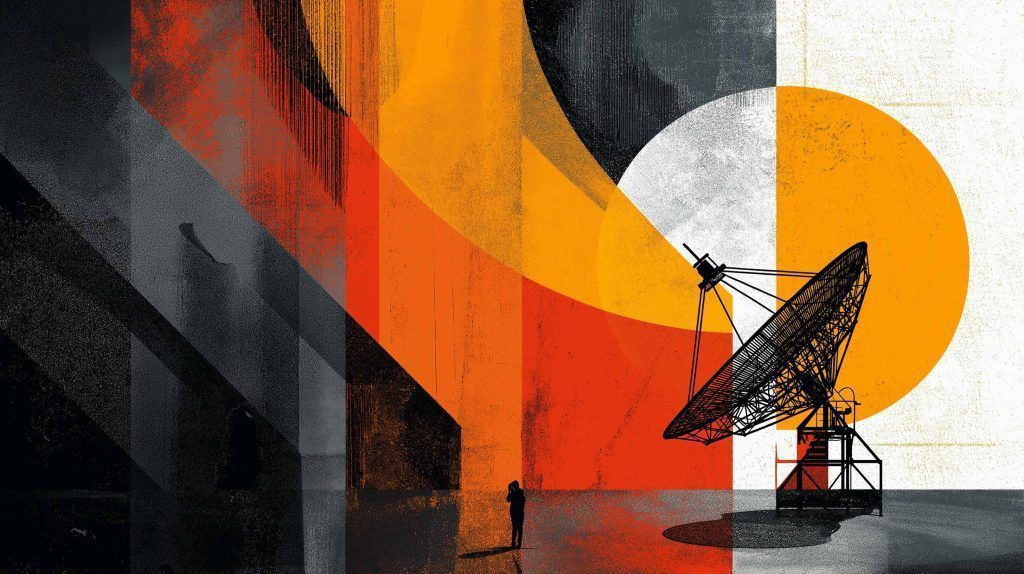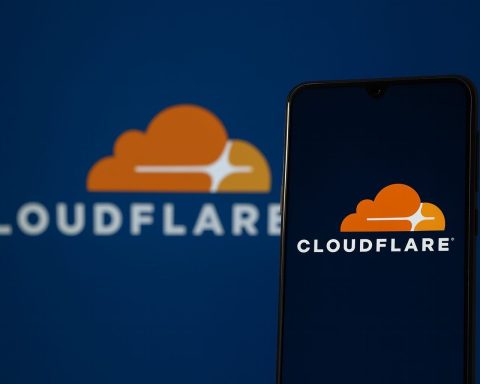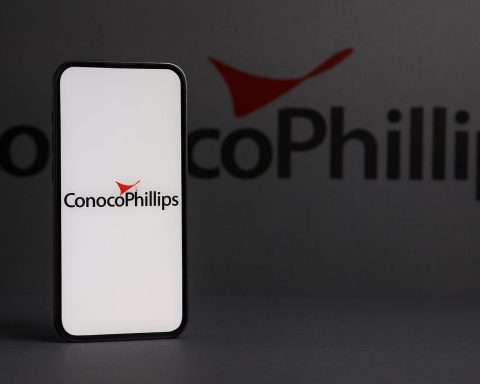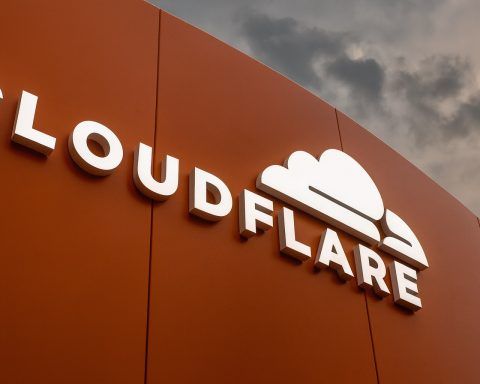- Norway reaches near-universal online access, with about 99% of residents online, 99.1% of homes able to receive at least 100 Mbps, and 96% gigabit availability as of 2024.
- Fiber-to-the-home (FTTH/FTTP) is the fixed broadband backbone, with over 70% of households on fiber delivering symmetric speeds from hundreds of Mbps up to multi-gigabit.
- As of 2023–2024, fixed broadband speeds average 140–142 Mbps download (100–127 Mbps upload), with the average subscribed download speed rising to about 300 Mbps in 2023 and 325 Mbps in 2024.
- Norway’s mobile networks are highly developed, with 4G coverage virtually 100%, 5G launched in 2020 and by June 2024 92% of households could get 5G with at least 30 Mbps and 69% had 5G with 100 Mbps+.
- There are three mobile operators—Telenor, Telia, and Ice—with Ice acquired by Lyse/Altibox in 2022, and by 2024 about 80% of urban households could access all three operators’ 5G signals while only about 29% of rural households had triple coverage.
- Fixed broadband pricing is relatively high, with a 2023 average monthly package around $80 and 300–500 Mbps fiber plans typically priced at 800–1000 NOK per month.
- Rural connectivity is supported by NOK 415 million in 2025, with rural 100 Mbps coverage at 82% in 2024 and 94.7% of sparsely populated areas having 100 Mbps mobile by 2024, while cabins show 68% with 100 Mbps+ and 32% with direct fiber.
- Starlink has been available in Norway since around 2022, delivering typical downloads of 50–150 Mbps with 20–40 ms latency, hardware around $600, and about $120 per month, and Space Norway signed a 2025 agreement to resell Starlink for maritime and enterprise.
- Norway has strengthened its internet backbone with new subsea cables to the UK (NO-UK) and Ireland, improving resilience and international connectivity.
- The government aims to be the most digitalised country by 2030, with universal 100 Mbps by 2025 and 1 Gbps for all by 2030, backed by Nkom oversight and EU-aligned telecom regulation.
Internet access in Norway is characterized by extensive coverage, cutting-edge infrastructure, and high performance. Norway consistently ranks among the world’s top countries for broadband connectivity, with virtually the entire population online and enjoying fast internet speeds. This report provides a detailed look at Norway’s internet landscape – including broadband technologies (fiber, DSL, cable, mobile), mobile network availability (4G/5G), performance metrics, pricing, government initiatives, rural connectivity, satellite internet, key service providers, comparisons with other countries, and future developments. The goal is to offer a structured, SEO-optimized overview of Norway’s internet access as of 2025.
Overview of Norway’s Internet Landscape
Norway has one of the highest internet penetration rates globally. Coverage is nearly universal – about 99% of residents have internet access [1], thanks to robust networks even in remote areas. The country’s geography of fjords and mountains poses challenges, but Norway has overcome these with strong investment in telecommunications infrastructure. High-speed broadband is widely available: as of 2024, 99.1% of Norwegian homes can get at least 100 Mbps service [2], and gigabit (1 Gbps) connectivity is available to over 96% of households [3]. This comprehensive coverage reflects Norway’s push toward a “gigabit society.”
Digital services permeate daily life – Norwegians use online platforms for banking, government services, shopping, and entertainment. The internet ecosystem in Norway is noted for its high quality and capacity. Networks handle growing traffic (20–30% annual growth) largely driven by streaming (which accounts for ~70% of traffic) [4] [5]. The infrastructure is modern and well-maintained, resulting in reliable connectivity. Net neutrality is strongly upheld; the regulator (Nkom) reports no major deviations in open internet access, and providers are generally compliant with transparency and traffic management rules [6] [7].
In summary, Norway’s internet landscape is defined by extensive accessibility, advanced technology adoption, and high usage. The following sections delve into specific aspects like fixed broadband infrastructure, mobile networks, performance statistics, costs, policies, and more.
Broadband Infrastructure: Fiber, DSL, Cable, and Mobile
Norway’s fixed broadband infrastructure has evolved rapidly, with fiber-optic networks becoming dominant while older technologies phase out [8]. Key broadband access technologies include:
- Fiber (FTTH/FTTP): The cornerstone of Norwegian broadband. Over 70% of households have fiber-to-the-home connections [9], delivering symmetric high speeds (hundreds of Mbps up to multi-gigabit). Fiber deployment has been extensive even in smaller towns, thanks to initiatives by regional utility companies (e.g. Lyse/Altibox) and incumbent telcos. Fiber offers the most reliable, future-proof connectivity and has largely supplanted copper in many areas. In 2024, fiber and other full broadband solutions enabled an average subscribed download speed of 325 Mbps nationwide [10], reflecting how many customers opt for high-speed fiber plans.
- DSL (Copper): Digital subscriber lines were once widespread via the telephone network, but are now being retired. Telenor, the incumbent, has decommissioned the old copper DSL network, completing a phase-out by 2022–2023 [11]. A small number of DSL lines remain in the most remote locales, often complemented by upgrades like G.fast technology to boost speeds on short loops [12]. However, DSL’s share is dwindling quickly as fiber and wireless alternatives take over.
- Cable (HFC): Cable broadband (over coaxial TV networks) existed primarily in urban areas (e.g. via former provider Get, now Telia). Cable still contributes to Norway’s broadband mix, though to a lesser extent than fiber. Cable networks have been upgraded to DOCSIS3.1 in some regions, enabling hundreds of Mbps. However, many cable customers are transitioning to fiber where available. The share of broadband via cable has been relatively stable but is not as high as in some EU countries [13]. Cable remains an option in certain cities and is counted among the technologies delivering 100+ Mbps connectivity.
- Fixed Wireless Access (Mobile Broadband): Norway has embraced mobile networks for home broadband in areas without fiber or cable. 4G/5G-based fixed wireless access (FWA) is used to deliver internet to rural homes and holiday cabins. These services use dedicated routers/antennas to connect to mobile towers, offering an alternative to wired lines. FWA is particularly useful where laying fiber is difficult; it can already provide 100 Mbps+ in 5G-covered areas. Regulators treat certain FWA offerings as “fixed” internet if they use dedicated spectrum or equipment [14] [15]. With carriers deploying 5G, FWA is expected to play a growing role in connecting remote households before fiber reaches them.
Overall, fiber broadband is the dominant and fastest-growing technology in Norway’s infrastructure, while legacy DSL is nearly gone and cable is static or declining. Mobile networks (4G/5G) serve both as on-the-go internet and as a fixed broadband substitute via FWA. This multi-technology mix has allowed Norway to achieve 99%+ high-speed coverage and to remain at the cutting edge of broadband delivery.
Mobile Internet Availability (4G and 5G Coverage)
Norway’s mobile networks are highly developed, ensuring broad availability of mobile internet services. 4G LTE coverage in Norway is virtually 100%, reaching almost all populated areas [16]. LTE became the backbone for mobile data over the past decade, and by the mid-2020s it provides a ubiquitous baseline of connectivity, even across Norway’s challenging terrain. Users can get a 4G signal in essentially all towns and transport routes, and 4G is often available even on remote islands and mountain areas (though very sparsely populated zones may have only basic coverage).
The 5G rollout in Norway is progressing rapidly. Commercial 5G launched in 2020, and by mid-2024 it had expanded to cover over 99% of households with at least a basic 5G signal [17]. Thanks to the activation of low-band 700 MHz frequencies for 5G, even rural regions are seeing coverage. As of June 2024, about 92% of households could get 5G with at least 30 Mbps throughput, and 69% of households had 5G coverage offering 100 Mbps or more [18]. This indicates that while virtually everyone is now in a 5G area, the strength and capacity (and hence speeds) are still improving as networks add mid-band and high-band spectrum.
- Population vs Geographic Coverage: Nearly all of Norway’s population has 5G available, but geographically about 60–70% of the country’s land area is covered [19]. This is expected given Norway’s vast wilderness. Operators prioritize population centers first; remote mountains or national parks may remain without 5G for now, though 4G is often present for basic service. The government’s spectrum licenses included obligations (e.g. 90% population coverage by end 2024) which carriers have met ahead of schedule [20].
- Multiple Networks: Norway has three mobile network operators – Telenor, Telia, and Ice – and the goal is for all households to eventually have a choice of three 5G networks [21]. As of 2024, urban areas are close to that goal (80% of households can access all three operators’ 5G signals), whereas rural areas lag (only ~29% have triple coverage) [22]. This implies that in many rural communities, at least one operator (typically Telenor or Telia) offers 5G now, with the others to follow to ensure competition and redundancy.
- 5G Technology: Both Non-Standalone (NSA) and emerging Standalone (SA) 5G are in play. Telenor and Telia are testing SA 5G core networks to unlock features like ultra-low latency and network slicing [23]. The third operator Ice has turned on 5G SA already, though Ice’s coverage footprint is still smaller (roughly 80% of urban, 30% rural by the company’s network) [24]. The ongoing upgrades mean Norwegian users will gradually see improvements in latency and capacity as full 5G is implemented.
In summary, mobile internet is widely accessible across Norway, with 4G LTE as a reliable foundation and 5G quickly becoming mainstream. Even by Nordic standards, Norway’s 5G deployment is advanced – within just a few years it has reached essentially all populated locales [25]. This widespread availability of mobile broadband supports Norway’s heavy use of smartphones and enables new applications like IoT, real-time services, and broadband for places hard to reach with wires.
Internet Performance: Speeds, Latency, and Reliability
Norway’s internet performance ranks among the best in the world. Both fixed and mobile networks deliver high average speeds and solid reliability.
Fixed broadband speeds in Norway are impressive thanks to the prevalence of fiber and modern cable. As of 2023, the average download speed on fixed networks was around 140–142 Mbit/s, with average upload around 100–127 Mbit/s [26] [27]. This represents a doubling of average speeds since 2017 and continued yearly growth [28]. Many households subscribe to 500 Mbps or 1 Gbps fiber plans, which raises the national average. In fact, if looking at subscribed package speeds, the average available download speed per subscription reached 300 Mbps in 2023 and about 325 Mbps in 2024 [29] – reflecting Norway’s fast progress toward gigabit connectivity. Latency on fixed broadband (especially fiber) is very low, typically on the order of a few milliseconds domestically, ensuring smooth real-time applications (video calls, gaming, etc.).
Mobile network speeds have also surged, particularly with 5G. Norway’s average mobile download speed was measured around 151 Mbit/s (ranked 6th globally) and upload ~22 Mbit/s (9th globally) as of late 2024 [30]. This is a huge leap from just a few years prior – for example, during 2022 the average mobile downlink was ~151 Mbit/s, far exceeding the forecast of 90 Mbit/s, indicating operators expanded capacity faster than expected [31] [32]. The widespread adoption of 5G (with its higher throughput) has boosted Norway’s mobile speeds to among the fastest in Europe. Even the dominant 4G network provides solid performance; for instance, Telenor’s 4G/5G users averaged ~87 Mbit/s download on that network in one analysis [33].
In terms of latency, 5G has started to reduce ping times on mobile connections. Early measurements show 5G can achieve ~20–30 ms latency (versus 30–40+ ms on 4G). A 2022 study found average mobile latency around 28 ms [34], which will improve as 5G Standalone rolls out. Fiber broadband latency is typically <10 ms to domestic servers. This low latency, combined with high speeds, means Norwegian internet users experience very responsive performance – streaming 4K video, online gaming, cloud applications, and video conferencing all function smoothly.
Network reliability is also a hallmark of Norway’s internet. Thanks to robust infrastructure and redundancy, downtime is minimal. A research report noted that over two-thirds of mobile connections in Norway have at least 99.99% availability (less than 9 seconds of downtime per day) [35], illustrating the high reliability of wireless networks. Fixed broadband networks similarly boast high uptime; operators invest in redundant fiber routes (including subsea cables connecting regions) to prevent outages. Power supply reliability (critical in remote areas) is high in Norway, further contributing to consistent internet service.
Overall, users in Norway enjoy high bandwidth and stable connections. The combination of fast download/upload speeds, low latency, and strong uptime makes Norway one of the leading countries for internet quality. It’s worth noting that these averages also reflect significant rural improvements – as remote areas get upgraded to fiber or 5G, the country’s overall performance metrics have risen. Norway’s internet is not just fast in cities but increasingly fast nationwide, supporting a digital society with demanding applications.
Internet Pricing and Plans in Norway
Internet service in Norway is generally high-quality – but it comes at a relatively high price. Both fixed broadband and mobile data plans in Norway tend to be more expensive than in many other countries, reflecting the high cost of building networks in rugged terrain and the willingness of Norwegian consumers to pay for premium service. That said, prices have seen some competitive pressure in recent years, and must be viewed in context of Norway’s high income levels.
Fixed broadband pricing: Norway has some of the highest fixed broadband prices in Europe. A 2023 global study found Norway’s average monthly broadband package cost to be about $80 (USD), making it the second-most expensive in Western Europe (behind only the Faroe Islands) [36]. This is far above the Western European regional average of ~$50. In a Nordic comparison, Norwegian broadband plans for comparable speeds cost NOK 270–750 (≈ $25–70) more per month than those in Sweden, Finland, or Denmark [37]. For example, a 300 Mbps or 500 Mbps fiber plan in Norway might be priced around 800–1000 NOK/month, whereas similar plans in neighboring countries could be 500–700 NOK. Even after adjusting for purchasing power, Norway’s broadband prices are significantly higher than same-speed plans in Denmark, Sweden, and Finland [38]. The high prices are partly attributed to less infrastructure competition in some areas (the incumbent and Altibox dominate fiber) and higher operating costs.
However, Norwegian providers often include quality perks – for instance, premium Wi-Fi routers, TV service bundles, or robust customer support – with their plans. It’s also common for promotional discounts to apply for the first 6–12 months of a subscription to attract customers [39]. Typical broadband packages in 2025 might include:
- Basic fiber 100–300 Mbps: around 600–800 NOK/month (after promo),
- High-speed fiber 500–1000 Mbps: around 900–1200 NOK/month,
- Rural wireless/4G home broadband: ~500 NOK/month for certain data quotas or ~800 NOK for large quota or unlimited FWA.
Despite high nominal prices, it’s worth noting Norwegians have high incomes; one analysis showed the average household spends only 0.37% of its income on mobile and broadband services [40], meaning it’s relatively affordable in budget terms, even if the price tag is high.
Mobile data pricing: Mobile plans in Norway historically have been pricey with limited data, but the landscape is gradually improving. Competition from a third operator (Ice) and various MVNOs has pushed prices down somewhat. In 2022, the average monthly mobile plan cost was around NOK 250 (≈ AU$38) for a bundle of minutes, texts, and a small data allowance [41]. This represented a ~30% drop in price from the previous year, indicating more competitive offers.
Today, Norwegian mobile operators offer a range of plans:
- Limited data plans (for example, 5–10 GB per month) might cost on the order of 300–400 NOK (~$30–40).
- Large or unlimited data plans are available but at a premium – e.g. unlimited 4G/5G data for around 500–600 NOK/month (approximately $50–60). Some providers cap the full-speed usage (like 100 GB at max speed, then throttle).
- Family or multi-SIM discounts are common, where additional SIMs or data sharing within a family plan lower the per-user cost.
Compared to the rest of Europe, Norway’s mobile data prices are among the highest. A Q3 2024 European comparison showed Norway had the most expensive average 4G mobile broadband tariffs (around $70 PPP per month, versus just $6 in the cheapest EU country) [42]. The flip side is that Norwegian plans maintain high network investment and quality. Users also get benefits like EU-wide roaming included and typically very good customer service.
Telecom bundles: Some Norwegian ISPs bundle broadband with TV or mobile service. For example, Telenor and Telia offer discounts if you take both mobile and home broadband, and Altibox (Lyse) pairs fiber with content packages. However, unlike some countries, bundling isn’t universal – many Norwegians purchase standalone broadband and use streaming services for TV. Where bundles exist, they might provide a small savings (maybe 5–10%) compared to separate services [43] [44].
In summary, internet in Norway is expensive but high-quality. The country’s broadband prices stand out as a pain point – the government even commissioned studies to understand why they are so high [45] – yet adoption remains high due to the importance of connectivity. Consumers are essentially paying a premium for one of the world’s fastest and most reliable internet experiences. Ongoing competition (e.g. Altibox’s expansion and Ice’s mobile offers) may gradually temper prices, but Norway is likely to remain a premium market in terms of cost.
Government Policies and Initiatives Supporting Internet Access
The Norwegian government has played a proactive role in expanding and improving internet access. Policy goals are ambitious: Norway aims to be “the most digitalised country in the world” by 2030 [46] [47]. To achieve this, authorities have set specific targets and programs for broadband coverage, mobile networks, and digital inclusion:
- High-Speed Broadband for All: The government’s goal is that everyone in Norway should have access to high-speed broadband of at least 1 Gbps by 2030 [48]. Interim targets included universal 100 Mbps access by 2025 – which the country is on track to meet, with 99%+ coverage at 100 Mbps already achieved [49]. As of 2024, only ~23,000 homes were left to connect to reach the 100 Mbps-for-all goal [50]. The longer-term Gigabit goal (1 Gbps for all by 2030) is also progressing: 96.2% of households have gigabit availability as of 2024 [51], leaving under 100,000 (mostly remote) homes to upgrade in the coming years.
- Funding and State-Aid for Rural Broadband: To extend networks to sparsely populated and hard-to-reach areas, the government provides annual grants to support rural broadband rollouts. Norway operates a state aid scheme (approved by the EFTA Surveillance Authority) that co-funds broadband projects in areas deemed not commercially viable [52] [53]. In recent years, this funding has been substantial: for example, NOK 415 million is allocated in 2025 to county municipalities for broadband in low-coverage areas [54]. These funds are distributed based on need (using Nkom’s coverage maps) and often go toward fiber deployment in remote communities or high-capacity wireless links for isolated villages. The program has been ongoing for over a decade, contributing to leaps in rural coverage (as seen by 100 Mbps rural availability jumping from ~71% to 82% in just one recent year) [55]. Local counties now administer these grants (since 2020), with Nkom advising on technical and regulatory aspects [56].
- Mobile Network Obligations: The government, through Nkom, attached coverage obligations to spectrum licenses (e.g. for 5G frequencies). For instance, operators had to reach 50% population coverage with 5G by 2022 and 90% by end of 2024 [57] – targets they have met or exceeded. This ensures that new technology isn’t limited to cities. Additionally, there’s a strategic goal that all households should eventually have a choice of three mobile networks (for resilience and competition) [58]. While achieving full 3-network coverage everywhere is challenging, the policy drives operators to expand into each other’s territory. The government also closely monitors mobile competition, using tools like wholesale access regulation to allow MVNOs, ensuring consumers have choices and innovative service offerings.
- Digital Inclusion and Affordability: Norway’s social policies emphasize that the internet should be accessible to everyone. While not directly offering subsidies to consumers (since internet subscriptions are generally affordable relative to income), the government invests in digital literacy programs and ensures public services are available online in user-friendly ways. There have been discussions about declaring broadband as a “universal service” (with a baseline like 20 Mb/s for all) [59], though as of 2025 Norway hadn’t formally made broadband a universal service obligation (USO). Instead, the focus has been on achieving the coverage goals through market and state-aid mechanisms. The government has also encouraged initiatives to get remaining holdouts connected, for example, awareness campaigns about the importance of getting homes wired (since some remote residents might not subscribe even when fiber arrives, due to cost or habit).
- Regulatory Environment: The Norwegian Communications Authority (Nkom) actively oversees the market. It enforces net neutrality (reporting annually on compliance [60]), manages spectrum auctions, and intervenes where competition is weak (for instance, regulating wholesale fiber access in areas dominated by one provider). Norway aligns with EU telecom regulations via the EEA Agreement, so it implements directives like the Open Internet Regulation, GDPR, etc., even though Norway is not an EU member. Recent EU digital acts (DSA, DMA, NIS2, etc.) are being transposed to Norwegian law [61] [62], ensuring Norway stays in step with European digital policy trends.
- Public-Private Collaboration: The government often works in partnership with industry for pilot projects. For example, there have been 5G testbeds (e.g. for smart transportation, fisheries) backed by public funding. The state also owns stakes in key telecom companies (Telenor is partially state-owned), which historically aligned the company’s goals with national interests like broad coverage. A notable public-private venture is Space Norway’s satellite projects (discussed more later), which received government backing to improve connectivity in the Arctic and for maritime users.
In essence, government initiatives in Norway strongly support internet expansion and quality. The strategy is twofold: set clear targets (100 Mbps and 1 Gbps for all, extensive 5G) and back them with resources (funding, favorable regulations, oversight of competition). The results are evident in the near-universal high-speed coverage Norway enjoys today. As the Minister of Digitalisation has outlined, these efforts all serve the vision of a fully digital Norway by 2030, where no one is left behind due to connectivity gaps [63] [64].
Rural and Remote Connectivity: Challenges and Solutions
Despite Norway’s extremely high overall coverage, connecting rural and remote areas remains a critical focus. The country’s sparsely populated north, deep fjord communities, islands, and mountainous interiors pose challenges – areas where running fiber or cables is costly and logistically difficult. However, significant progress has been made to bring broadband to these regions through a combination of technologies and targeted solutions:
- Fiber expansion to rural communities: Many remote towns and villages now enjoy fiber-optic broadband thanks to Norway’s decentralized approach. Local utility companies and regional energy providers (often in partnership with Altibox/Lyse or Telenor) have rolled out fiber in places once considered uneconomical. Government grants (as mentioned earlier) subsidize some of these builds. As a result, rural 1000 Mbps coverage rose from ~78% in 2023 to over 82% in 2024 for households [65] – a notable jump in one year. While extremely remote hamlets might still lack fiber, the gap is closing yearly. For example, counties like Nordland and Innlandet, which have many far-flung settlements, have seen steady improvements but still lag slightly behind southern counties in coverage [66]. Efforts continue to fiber-up the “final few”: those last tens of thousands of rural homes without high-speed access.
- Fixed wireless and mobile solutions: In some rugged areas, rather than stringing fiber through miles of wilderness, operators deploy high-capacity wireless links. Fixed Wireless Access (FWA) using 4G/5G is a key tool. Rural homes might get a rooftop antenna pointed to a distant cell tower that has been equipped with upgraded spectrum. This can deliver 100 Mbps+ if the tower has 5G and an uncongested backhaul. There are also instances of radio relay links connecting isolated valleys to the main network. Additionally, Norway has communities using microwave or radio links to connect clusters of homes, often set up by local internet co-ops. While these require line-of-sight and careful maintenance (especially in harsh winter weather), they can be effective interim solutions until fiber arrives.
- Geographic challenges: Norway’s terrain means that simply having coverage doesn’t guarantee uniform quality. Mountainous topography can block wireless signals; long distances can degrade copper lines (which is partly why copper was phased out). Providers have tackled this with creative engineering: undersea fiber cables to islands and oil platforms, tunnels and masts to broadcast signals across fjords, and even leveraging electric grid infrastructure to piggyback fiber on power lines. One notable project connected the remote Arctic archipelago of Svalbard with mainland Norway via an undersea fiber-optic cable, giving Svalbard residents and scientific stations excellent connectivity (this was a special case, but it underscores Norway’s commitment to connecting even its most far-flung territories).
- Public Wi-Fi and community networks: In some remote tourist areas or small villages with limited households, building out full broadband may be slow. As a stopgap, community Wi-Fi hubs have been set up – for instance, library or municipal buildings offering high-speed Wi-Fi that locals can use. Some mountain tourist lodges provide internet via satellite or long-range Wi-Fi to nearby cabins. The government has also supported pilot programs for cross-border sharing of infrastructure in rural areas near Sweden/Finland to improve coverage (using whichever side’s network is closer) [67].
- Progress and remaining gaps: Thanks to these solutions, the rural–urban digital divide in Norway has shrunk considerably. By 2024, even “sparsely populated areas” had 94.7% coverage at 100 Mbps [68], up from 90% a year before. However, some very remote single farms or hamlets still might lack high-speed options – these may rely on older satellite internet or basic 4G if within range. The remaining challenge is often the cost: reaching the last few percent of households can be disproportionately expensive. This is where continued state support is vital. The authorities have indicated they will keep funding rural broadband until 100% coverage goals are met [69]. There’s also encouragement for dig-once policies – e.g. when new roads or utility works happen, lay fiber ducts concurrently to eventually serve remote areas more cheaply.
One concrete example of rural success is the increase in broadband to holiday homes (cabins). Norwegians often have cabins in remote areas, and now about 68% of those have access to 100 Mbps+ internet – many via fixed wireless or fiber if near a village [70]. Over 32% of holiday cottages even have direct fiber lines [71]. This shows that connectivity is extending beyond primary residences to secondary locations as well.
In summary, Norway addresses rural connectivity with a mix of fiber where feasible, wireless where practical, and subsidies where necessary. The multi-pronged approach, plus strong political will, has made Norway one of the best-connected countries relative to its challenging geography. While a few remote spots remain to be connected, the trajectory suggests that by 2030, even Norway’s wilderness will not be offline.
The Role of Satellite Internet in Norway
Satellite internet plays a niche but important role in Norway’s connectivity ecosystem, especially for the most isolated locations and specific use cases like maritime connectivity. Given Norway’s vast maritime economic zone, Arctic territories, and some extremely remote communities, satellites can provide coverage where terrestrial networks end. In recent years, new low-Earth orbit (LEO) satellite services have expanded in Norway, complementing traditional geostationary satellites.
Key satellite internet providers and use cases in Norway:
- Starlink (SpaceX): Starlink’s LEO satellite internet service became available in Norway around 2022 [72], and it now covers the entire country (even high latitudes up to Nordkapp). Starlink has been a game-changer for remote Norwegian users – from rural households in mountain valleys to people on the move (like RV owners) and fishermen at sea. It offers high bandwidth and much lower latency than classic satellites. Users in Norway report typical download speeds in the 50–150 Mbps range and latency ~20–40 ms on Starlink, which is comparable to or even better than a 4G mobile connection. For example, tests on Norwegian railway routes in remote regions saw Starlink provide ~50 Mbps on average (with lows around 20 Mbps) to moving trains [73]. Starlink is especially popular for cabins and rural homes that can’t get decent 4G or where fiber is years away. The service isn’t cheap – hardware costs ~$600 and the subscription ~$120 (roughly 1300 NOK) per month for standard service [74] – but for those with no other option, it’s transformative. Notably, Space Norway (the state-owned satellite operator) signed an agreement in 2025 to become an authorized Starlink reseller for maritime and enterprise clients [75] [76]. This integration means Norwegian shipping, oil rigs, and remote industries can get Starlink-based services with local support, improving connectivity at sea.
- Geostationary Satellite Services: Prior to LEO availability, Norway relied on geostationary satellites (e.g. Thor satellites at 1°W operated by Telenor/Space Norway, Inmarsat, Viasat) for remote connectivity. These services (often VSAT) are still used in maritime, on ships and offshore platforms, and in extremely remote outposts (like isolated research stations). They provide coverage even beyond 75°N latitude, which is critical for Arctic operations. However, GEO satellite internet has high latency (~600 ms) and moderate speeds (often 1–20 Mbps). For example, ferries and cruise ships around Norway that use older satellite packages might only offer a couple of Mbps to passengers. With Starlink’s arrival, many maritime users are transitioning to LEO for vastly better performance. Still, Telenor Satellite (now part of Space Norway) continues to offer GEO-based broadband to maritime, aviation, and emergency services, ensuring coverage even when newer systems might be unavailable.
- Arctic Satellite Broadband Mission (ASBM): Norway has invested in a unique satellite solution for the high Arctic. Through Space Norway, it launched two Highly Elliptical Orbit (HEO) satellites (ASBM-1 and 2, in collaboration with the US and UK) in 2023. These satellites are designed to provide continuous broadband coverage above 65°N, including the North Pole region, which GEO satellites have difficulty reaching due to earth curvature. The ASBM satellites carry payloads from Inmarsat (commercial broadband) and the Norwegian military. Once operational, they will offer improved connectivity for Arctic Norway – benefiting Svalbard, polar research, and Arctic shipping. This is a specialized use case, but it highlights Norway’s commitment to ensuring internet access literally everywhere, even the polar seas.
- Use in Disaster/Emergency: Satellite internet also serves as a backup for resilience. Given Norway’s rugged landscape, natural events (avalanches, storms) could cut off ground networks. Satellite links (either GEO or Starlink) can provide emergency connectivity to communities or response teams if landlines or mobile networks fail. Government agencies have satellite terminals ready for such scenarios as part of their emergency preparedness.
Performance of satellite internet: With LEO satellites like Starlink, performance is now quite good – comparable to mid-tier terrestrial broadband. Users in Norway have seen >100 Mbps downloads, which often outperforms ADSL or congested 4G in the same location [77]. The latency of ~30 ms means VoIP and video calls are viable, a huge improvement over the half-second lag of GEO satellites. The main drawbacks are the cost and reliance on clear sky views. In the far north, Starlink dishes must have a proper angle to the satellite constellation, and heavy snow or northern lights have minor impacts that users have noted (mostly solvable with dish heaters and good installation).
For remote professionals, adventurers, or small businesses (like fish farms in remote fjords), satellite internet provides a lifeline. Norway’s extensive coastline and remote islands (like those above the Arctic Circle) especially benefit. For instance, some fishing villages in Lofoten or Finnmark that are hard to reach with fiber can get fast internet via Starlink, enabling commerce and schooling from home that was previously difficult.
In conclusion, while satellite internet is not the primary connectivity for most Norwegians, it plays a critical supporting role. It fills the gaps beyond the reach of terrestrial networks and is part of Norway’s strategy to connect 100% of areas. Going forward, with partnerships like Space Norway-Starlink and new satellite tech, even Norway’s oceans and extreme north will have robust internet access, ensuring that Norway’s digital ambitions extend to every last mile – on land, sea, or ice.
Key Internet Service Providers and Market Share
Norway’s internet service provider (ISP) market is competitive but concentrated among a few major players. The landscape includes traditional telecom companies, energy company consortiums, and a handful of smaller operators. Here are the key ISPs in Norway and their market positions:
- Telenor – The incumbent telco: Telenor is Norway’s largest telecommunications company and a former state monopoly. It remains the dominant player in both fixed and mobile markets. In fixed broadband, Telenor provides fiber (often via its Canal Digital and Telenor Fiber networks), cable (coax networks in some cities), and DSL (previously, now mostly discontinued). Telenor’s fixed broadband market share is about 30% (by revenue subscriptions) [78]. It has lost some share due to copper shutdown but still nearly a third of the market. In mobile, Telenor is the clear leader – it accounts for roughly 48% of mobile subscriptions and an even higher share (~56%) of mobile service revenues [79] [80]. With ~2.8 million mobile customers, Telenor’s network covers the entire country and it’s often first in deployment (e.g. they boast the widest 5G footprint alongside Telia). Telenor is known for premium quality and has the fastest average mobile speeds among Norwegian operators [81]. The company’s size and resources make it a key driver of Norway’s telecom infrastructure.
- Altibox (Lyse) – Fiber challenger (energy sector consortium): Altibox is a fiber broadband provider that began as a partnership of regional utility companies led by Lyse (an energy company in Stavanger). Altibox and its partner networks have become the largest fixed broadband group in Norway with ~34.8% market share (collectively) [82]. They specialize in fiber-to-the-home, often being the first to bring fiber to smaller municipalities. Altibox operates via local partners (usually utility co-ops) across many regions, offering high-speed internet and IPTV. The Altibox alliance has around 750,000 fiber subscribers [83], roughly on par with Telenor’s broadband base. In 2022, Altibox’s parent Lyse acquired the mobile operator Ice, marking a move into mobile. As of 2024, Lyse/Altibox (with Ice) is emerging as a converged competitor. Ice’s mobile share (~14%) combined with Altibox’s broadband strength positions Lyse as a solid number three operator overall [84] [85]. Altibox’s success has introduced more competition, especially in fiber, and they are known for high customer satisfaction and pushing gigabit offerings.
- Telia Norway – The international rival: Telia (a Swedish-based group) is the second-largest mobile operator and also a significant fixed broadband provider in Norway. Telia entered the market by acquiring NetCom (mobile) and later Get (a cable TV/broadband company) and Tele2’s Norwegian assets. In mobile, Telia holds about 39% share of subscriptions [86], making it Telenor’s primary competitor. They too have nationwide coverage and rolled out 5G quickly (Telia actually was first to claim 5G in some cities). On the fixed side, Telia’s broadband market share is smaller – around 11% [87]. This comes mainly from the former Get cable network and some fiber deployments. Telia offers cable (DOCSIS) in Oslo and other cities, and is converting many areas to fiber. They bundle services (mobile + TV + internet) and target urban consumers. While Telia is a distant second in fixed broadband, its presence provides an alternative to Telenor/Altibox in many areas. The company has been focusing on upgrading its cable customers to higher speeds and expanding fiber where possible.
- GlobalConnect – Business and fiber wholesale provider: GlobalConnect (which merged with IP-Only and Broadnet) operates a large fiber backbone and serves enterprise customers as well as providing some residential fiber (often via open networks or apartment building fiber). It has about 8% of the fixed broadband market [88], mostly from corporate leased lines and some consumer fiber in housing associations. GlobalConnect doesn’t offer mobile; instead, it’s a carrier’s carrier and a challenger in the B2B segment. They also own data centers and international fiber links. For consumers, GlobalConnect might not be a household name, but in some regions (like Viken/Oslofjord area) they provide fiber under various local brands. Their market share indicates a moderate presence, and they sometimes collaborate with Altibox or Telia for last-mile reach.
- Ice – Challenger mobile operator: Ice was the third mobile network operator, with around 12–14% mobile subscriber share by 2023 [89] [90]. Ice focused on lower prices and was building out 4G/5G (mainly in populated areas, while relying on national roaming on Telia elsewhere). In 2022, Ice was acquired by Lyse/Altibox [91], integrating it into the Altibox family. Now under Lyse’s ownership, Ice is expected to continue as a brand but benefit from cross-selling to Altibox’s fiber customers. Ice’s network is still smaller than Telenor/Telia, but it has been investing heavily in 5G and launched Norway’s first 5G Standalone core. Ice’s inclusion gives Norway a solid three-player mobile market (Telenor, Telia, Ice(Lyse)), which is considered stable and competitive, though not a price war market [92] [93]. For end users, Ice offers an alternative with often slightly lower prices or larger data quotas, helping keep the big two in check.
- NextGenTel and others – Smaller ISPs: NextGenTel was once a significant DSL provider and now offers fiber and wireless broadband in some areas (often reselling or via open networks). Its market share is only about 2.4% now [94], as consolidation and fiber rollouts eclipsed the smaller DSL-based companies. There are also local city networks or power-company ISPs beyond the Altibox umbrella (e.g., Eidsiva Bredbånd in Innlandet, which actually joined Altibox partnership, and Signal Bredbånd in the north). These collectively fall into the “others” category (~13% of market) [95]. Many have been acquired or aligned with larger groups. On the mobile side, besides the three network operators, there are MVNOs like Chili Mobil, OneCall, Talkmore (the latter two are sub-brands of the majors). MVNOs have a modest share but serve niche segments (low-cost, youth plans, etc.). They benefit from regulated access to Telenor/Telia networks to ensure competition at the service level.
To summarize in bullet form, here’s the market share breakdown for fixed broadband and mobile in Norway (approximate 2023 figures):
- Altibox (Lyse) – ~34.8% of fixed broadband (market-leading) [96]. Newly entered mobile via Ice (~14% mobile share) [97].
- Telenor – ~29.9% of fixed broadband [98]; largest mobile operator with ~48% share [99].
- Telia – ~11.3% of fixed broadband [100]; second-largest mobile with ~39% share [101].
- GlobalConnect – ~8.2% of fixed broadband [102] (mostly B2B and wholesale).
- NextGenTel – ~2.4% of fixed broadband [103] (and shrinking).
- Other local ISPs – ~13% combined fixed broadband (small regionals, utilities, etc.).
- Ice (Lyse) – ~12–14% of mobile (now part of Lyse/Altibox group) [104].
- MVNOs (various) – remaining few percent of mobile (no single MVNO over a few percent).
This structure shows that while Norway has a competitive market, it is dominated by a few integrated players. The “three-player” dynamic (Telenor vs Telia vs Lyse/Altibox-Ice) is often cited as an ideal balance between investment and competition [105] [106] – all three have incentive to improve networks but none want to engage in destructive price wars. Consumers benefit from high-quality networks and some choice, though as noted, prices are not the lowest. Market consolidation has happened (e.g., Telia buying cable provider Get, Lyse buying Ice) but regulators carefully watch that competition isn’t reduced. So far, the competition authority and Nkom have allowed these moves, seeing fiber and mobile as somewhat separate markets and the mergers as creating stronger challengers to Telenor (Norway’s market is considered less concentrated than some peers, judging by Herfindahl index) [107].
In essence, Norway’s ISP market is characterized by strong incumbents and innovative challengers. Telenor’s legacy is balanced by Altibox’s fiber prowess and Telia’s multinational strength. This has spurred Norway’s rapid technological progress – for example, Telenor and Telia racing on 5G, and Altibox pushing widespread fiber – ultimately benefiting Norway’s internet users.
Comparison with Other Nordic and EU Countries
Norway is often compared to its Nordic neighbors and other European countries in terms of internet development. Generally, Norway ranks at the top tier in connectivity, alongside countries like Sweden, Denmark, and Finland, and ahead of the EU average in most metrics. Below is a comparison across several dimensions:
- Broadband Coverage and Penetration: All Nordic countries have high broadband coverage, but Norway’s recent stats are particularly impressive. With 99% of homes having 100 Mbps and 96% having gigabit availability [108] [109], Norway meets or exceeds the targets set by the EU for 2025 (the EU’s “Gigabit Society” goal is 100 Mbps for all households by 2025). Sweden and Denmark similarly report very high fast broadband coverage (Sweden slightly ahead in FTTH penetration historically, Denmark leveraging cable and fiber, Finland improving fast but a bit behind in fiber reach). The EU average for 100 Mbps coverage was around 90% in 2023, so Norway is above that. Internet penetration (the percentage of population online) in Norway is ~98-99%, comparable to Sweden and Denmark, and higher than the EU average (~89%). Essentially, Norway and its Nordic peers lead Europe in getting nearly every citizen connected.
- Fiber and Technology Mix: Norway and Sweden are often cited as fiber leaders in Europe. Sweden started earlier with municipal fiber networks and by 2023 had a slightly higher share of fiber broadband subscriptions than Norway [110] [111]. Norway has quickly caught up with a large portion of its fixed connections on fiber (as noted, 70%+ homes passed by fiber [112]). Denmark and Finland also expanded fiber but still rely a bit more on cable (Denmark) or had more DSL historically (Finland). That said, all Nordics are pushing toward fiber or cable DOCSIS 3.1 for gigabit goals. Compared to the broader EU, where some countries still have a lot of DSL, Norway is far ahead in transitioning to modern networks – the copper sunset in Norway is basically done, whereas in Germany, UK, etc. it’s still ongoing. In summary, Norway’s infrastructure is one of the most modern in Europe, with very little legacy DSL remaining and strong fiber presence, second perhaps only to some Asian leaders.
- Internet Speeds: Norway’s average speeds rank among the highest. On fixed broadband, Norway (with ~140 Mbps average download) is similar to Sweden (which often has 150+ Mbps averages) and a bit above Denmark/Finland (which might be around 100–120 Mbps on average). These numbers put all Nordics in the top 10–15 globally for speed. In EU comparisons, Norway (though not EU) would be near the top – for instance, countries like Spain, Netherlands, and Switzerland also have high fiber and thus high averages, but Norway is certainly in the leading pack. On mobile, Norway’s ~151 Mbps average download [113] outranks most of Europe; in fact, Finland historically led in mobile data usage but not speed (Finland has unlimited data plans and highest per capita usage, but their average download might be slightly lower, ~80–100 Mbps, due to network load). Sweden and Denmark have robust mobile networks too; a late-2024 report showed Norway slightly behind Sweden in peak 5G speeds but ahead in overall availability, while Denmark excelled in 5G availability but with lower speeds, showing each Nordic has its strengths [114]. Globally, Norway is top 10 in mobile speed, on par with countries like the UAE or South Korea. EU average mobile speed is much lower (around 40–50 Mbps), so Norway’s mobile network is clearly superior to most of Europe’s in performance.
- Pricing: This is where Norway differs from many peers. As discussed, Norway’s internet prices are higher. In the Nordic context, Sweden, Denmark, and Finland have cheaper broadband and mobile plans on average. For example, unlimited mobile data is commonly affordable in Finland (~€30 for unlimited at high speed), whereas in Norway unlimited is available but at a higher cost (maybe €50+). Fixed broadband in Norway is ~30-60% more expensive than in Denmark/Finland for the same speed [115]. Sweden’s prices are second highest but still below Norway’s. When comparing to the EU at large, Norway’s broadband cost (average $80) is much higher than the EU average (which might be around $40–50). The only places more expensive than Norway tend to be small markets or island nations (Faroe, Iceland are in Norway’s range, as noted, and outside Europe, places like Switzerland have similar high price levels). Thus, from a consumer viewpoint, Norway’s internet could be considered pricey relative to other countries, despite high quality.
- Market and Competition: The Nordic countries generally have a similar market structure (an incumbent and a couple of strong competitors). Norway’s scenario of three main mobile networks is mirrored in Sweden and Denmark (though Denmark has 4 to some extent, but consolidating), and Finland has 3. In fixed broadband, all Nordics have incumbents and a mix of municipal or alternative operators pushing fiber. Norway’s market concentration is moderate – the largest fixed broadband player (Altibox collective) has ~35% share, whereas in Sweden Telia has ~33% [116], and in some EU countries incumbents have over 40-50%. The Herfindahl-Hirschman Index (HHI) for broadband in Norway is relatively low and has been decreasing, indicating improving competition [117]. This trend is similar in Sweden and Finland as new fiber entrants gained share [118] [119]. So competitively, Norway is in line with the healthy competitive environments of Nordic markets, certainly more competitive than some southern European markets where the incumbent still dominates heavily.
- Usage and Digital Society: All Nordics including Norway score highly on digital indices (like the EU Digital Economy and Society Index, although Norway isn’t ranked in EU index, it would score high). Finland stands out for mobile data usage – Finns consume the most mobile data per capita worldwide (due to cheap unlimited plans, averages well over 40 GB per user per month). Norway’s usage is lower – in fact, as Nkom pointed out, Norwegians use less mobile data per customer than Swedes or Finns, likely because of higher prices [120]. This could change as Ice and others push larger data bundles. On fixed broadband usage, Norwegians, like other Nordics, have heavy usage (with 4K streaming, etc. anecdotally many have hundreds of GB or even 1+ TB monthly usage). There’s no strict data caps on fixed lines in Norway (unlike some US or Canadian plans), so people freely use streaming, cloud backups, etc. Culturally, the Nordics are all very tech-savvy, and Norway is no exception – nearly everyone bank online, uses digital IDs, etc., similar to Denmark or Sweden.
In summary, Norway is at the forefront of internet access when compared to Europe. It shares the podium with other Nordic countries in terms of coverage, speed, and digital advancement, often trading first place in various metrics:
- Norway leads in near-universal gigabit coverage and has recently surged in 5G availability.
- Sweden might slightly lead in fiber penetration and 5G peak speeds.
- Finland leads in mobile data usage and affordability.
- Denmark leads in certain pricing and also had early full LTE coverage.
However, these differences are small; collectively the Nordics far outshine the EU average. The main area where Norway “lags” is on cost, where it’s among the most expensive in Europe for consumers [121]. But on infrastructure quality and access, Norway sets a benchmark that many other countries look up to. It’s fair to say Norway is in the top echelon of global internet leaders, comparable to the likes of South Korea, Singapore, or Switzerland in many respects of its internet landscape.
Future Developments and Investments in Internet Infrastructure
Looking ahead, Norway is poised to continue its momentum in developing internet infrastructure, guided by both government strategy and industry innovation. Key future developments and investments expected in the coming years include:
- Completion of Nationwide Gigabit Coverage: By 2030, Norway aims to have every household able to access 1 Gbps broadband [122]. The last few percent of homes (mostly in very remote areas) will require creative solutions. We will see continued fiber rollouts subsidized by state funds to remote districts. For the most hard-to-reach spots (farms, mountain areas), expect a combination of extended 5G fixed wireless and possibly LEO satellite links to achieve the gigabit objective. The government’s commitment of hundreds of millions of NOK annually for rural broadband will likely persist or grow until full coverage is attained [123]. By 2025, practically 100% should have 100 Mbps, and by 2030 the focus is on elevating those remaining 100 Mbps areas to gigabit. This might involve upgrading regional wireless ISPs to new technologies (e.g., 5G mmWave or future 6G FWA) or public-private partnerships laying fiber backhaul deeper into rural areas.
- 5G Network Expansion and 6G Preparation: In the mobile arena, Norwegian operators will finish densifying 5G coverage (especially adding capacity in cities and filling any rural gaps). With 5G Standalone cores coming online at Telenor and Telia by 2024–2025, new services like network slicing, private 5G networks for industries, and massive IoT connectivity will expand. Looking further, Norway, along with other Nordic countries, is likely to be an early mover on 6G research and trials (6G is expected around 2030). The Norwegian 5G networks already use dynamic spectrum and will adopt upcoming enhancements (like 5G Advanced features) to boost performance. Millimeter wave 5G (26 GHz band) is also on the horizon – an auction for 26 GHz is planned by 2025 [124] [125], which will enable multi-gigabit wireless in dense areas or fixed wireless scenarios. We might see city hotspots with 5G mmWave for extremely high speeds (e.g. in Oslo’s busiest zones or for specific industrial use).
- Fiber Backbones and International Links: Norway will invest in strengthening its core networks. Nkom has a plan for robust transmission networks towards 2030 [126], ensuring that the internet backbone and backhaul links are redundant and can handle ever-growing traffic. There are projects to lay new subsea fiber cables – for instance, new links from northern Norway to mainland Europe (to provide alternative paths avoiding traditional routes) and possibly a second fiber to Svalbard for redundancy. Additionally, Norway is looking at the opportunity of becoming a data hub, leveraging its cool climate and renewable energy for data centers – so ensuring plenty of international bandwidth is part of that strategy. Recently, new cables were completed from Norway to the UK (e.g. the NO-UK cable) and to Ireland, improving resilience. Further investments might include routes connecting to Asia via the northeast passage (a bold idea under discussion due to Arctic ice melt allowing cables over Siberia). These backbone enhancements mean end-users should see even more reliable and low-latency connections globally.
- Satellite and Arctic Connectivity: With the launch of the Arctic HEO satellites (ASBM), by 2024–2025 these will become operational, providing high-speed coverage in the Arctic. This will benefit northern communities, airlines, and shipping. Norway will also integrate satellite connectivity into its national systems more – for example, using satellites as a backhaul for cell towers in remote areas rather than microwave, or equipping more transport (buses, trains, ships) with Starlink or similar for passenger connectivity. By embracing multi-orbit solutions (LEO + GEO), Norway ensures that even if terrestrial networks face issues, there’s a backup. Space Norway’s strategy of “multi-orbit infrastructure” [127] [128] suggests ongoing investment in satellite capacity – possibly more partnerships with LEO constellations or even Norway’s own satellites for specific needs (e.g., national security communications).
- Emerging Technologies – IoT, Smart Networks: The future internet in Norway will also be about quality and innovation. Expect expansion of NB-IoT and LTE-M networks for Internet of Things, so that everything from remote sensors in fisheries to smart city infrastructure is connected. 5G’s low-latency capabilities will enable new tech like autonomous transport (self-driving ferries or buses tested with 5G), remote-controlled machinery in oil fields, and advanced telemedicine to remote clinics. Norway’s digital strategy emphasizes using data and AI – having robust networks is foundational for that [129] [130]. Additionally, edge computing nodes might be deployed by operators to reduce latency for cloud services within Norway, complementing the network upgrades.
- Cybersecurity and Resilience: As infrastructure expands, Norway is also investing in security. By 2025, new EU-aligned security regulations (NIS2 Directive, etc.) will be in place [131] [132]. Telecom networks are critical infrastructure, so expect efforts to harden networks against cyber threats and to ensure redundancy against physical outages (more backup power for base stations, for example). The government has set goals for all municipalities to improve their information security systems by 2030 [133]. This translates to safer internet services for users and more robust networks in the face of both cyber attacks and natural disasters.
- Market and Regulatory Developments: On the market side, a major future change is the integration of Lyse/Altibox and Ice – by 2024, Ice will likely be fully merged into “Lyse Tele” as a converged operator [134] [135]. This could spur new service bundles (e.g., Altibox fiber + Ice mobile packages) and perhaps more pricing competition for bundles. Regulators will monitor if this 3-player market stays healthy; if prices remain high, they might consider interventions (though Nordics generally prefer infrastructure competition over price regulation). Also, as 5G networks mature, MVNO agreements might improve, potentially allowing more virtual operators to offer innovative plans (like strictly data-only plans for gaming, etc.). By late 2020s, we might even see discussions about network sharing for 6G in rural areas (to reduce costs, given Norway’s challenging terrain – similar to how Telia and Telenor share a radio network in Denmark, for instance).
In essence, Norway’s internet future is about finishing the job of complete high-speed coverage and staying on the cutting edge of technology. Investments will continue in fiber and 5G to hit 100% targets, while preparing for next-gen tech (whether 6G or satellites) to keep Norway among the world’s best-connected nations. The Norwegian government’s digital strategy explicitly ties connectivity to national competitiveness and welfare [136] [137], so we can expect broadband and mobile networks to remain a priority sector. By 2030, if all goes to plan, Norway will have a seamless fabric of connectivity – from inner-city gigabit broadband to smart ships in the Arctic Ocean – truly making it a global model for internet access.
Sources:
- Nkom (Norwegian Communications Authority) reports on broadband coverage and internet performance [138] [139] [140] [141]
- Independent analysis by Paul Budde/Independent Australia on Norway’s broadband status [142] [143]
- Government digital strategy statements [144] [145]
- Tefficient report on Norwegian broadband pricing (2024) [146]
- Space Norway and industry news on satellite and 5G developments [147] [148]
- Market data from Nkom and Tefficient on ISP market shares [149] [150] [151]
- Mobile Europe and Telecompaper coverage of Norway’s broadband and 5G progress [152] [153].
References
1. independentaustralia.net, 2. www.mobileeurope.co.uk, 3. www.mobileeurope.co.uk, 4. nkom.no, 5. independentaustralia.net, 6. nkom.no, 7. nkom.no, 8. independentaustralia.net, 9. independentaustralia.net, 10. www.mobileeurope.co.uk, 11. www.regjeringen.no, 12. independentaustralia.net, 13. www.regjeringen.no, 14. nkom.no, 15. nkom.no, 16. omdia.tech.informa.com, 17. cms.law, 18. cms.law, 19. www.telecompaper.com, 20. 5gobservatory.eu, 21. cms.law, 22. cms.law, 23. cms.law, 24. cms.law, 25. cms.law, 26. independentaustralia.net, 27. nkom.no, 28. nkom.no, 29. www.mobileeurope.co.uk, 30. independentaustralia.net, 31. nkom.no, 32. nkom.no, 33. independentaustralia.net, 34. nkom.no, 35. www.simulamet.no, 36. bestbroadbanddeals.co.uk, 37. www.regjeringen.no, 38. www.regjeringen.no, 39. www.regjeringen.no, 40. independentaustralia.net, 41. independentaustralia.net, 42. www.point-topic.com, 43. www.regjeringen.no, 44. www.regjeringen.no, 45. www.regjeringen.no, 46. www.regjeringen.no, 47. www.regjeringen.no, 48. www.regjeringen.no, 49. www.mobileeurope.co.uk, 50. www.mobileeurope.co.uk, 51. www.mobileeurope.co.uk, 52. www.samenacouncil.org, 53. www.samenacouncil.org, 54. www.mobileeurope.co.uk, 55. www.telecompaper.com, 56. www.samenacouncil.org, 57. 5gobservatory.eu, 58. cms.law, 59. independentaustralia.net, 60. nkom.no, 61. nkom.no, 62. nkom.no, 63. www.regjeringen.no, 64. www.regjeringen.no, 65. www.mobileeurope.co.uk, 66. www.mobileeurope.co.uk, 67. futurium.ec.europa.eu, 68. www.mobileeurope.co.uk, 69. www.mobileeurope.co.uk, 70. www.mobileeurope.co.uk, 71. www.mobileeurope.co.uk, 72. en.wikipedia.org, 73. www.railway.supply, 74. www.tomsguide.com, 75. spacenorway.com, 76. spacenorway.com, 77. ts2.tech, 78. www.regjeringen.no, 79. nkom.no, 80. independentaustralia.net, 81. independentaustralia.net, 82. www.regjeringen.no, 83. strandconsult.dk, 84. strandconsult.dk, 85. strandconsult.dk, 86. nkom.no, 87. www.regjeringen.no, 88. www.regjeringen.no, 89. strandconsult.dk, 90. nkom.no, 91. strandconsult.dk, 92. strandconsult.dk, 93. strandconsult.dk, 94. www.regjeringen.no, 95. www.regjeringen.no, 96. www.regjeringen.no, 97. nkom.no, 98. www.regjeringen.no, 99. nkom.no, 100. www.regjeringen.no, 101. nkom.no, 102. www.regjeringen.no, 103. www.regjeringen.no, 104. nkom.no, 105. strandconsult.dk, 106. strandconsult.dk, 107. www.regjeringen.no, 108. www.mobileeurope.co.uk, 109. www.mobileeurope.co.uk, 110. www.regjeringen.no, 111. www.regjeringen.no, 112. independentaustralia.net, 113. independentaustralia.net, 114. omdia.tech.informa.com, 115. www.regjeringen.no, 116. www.regjeringen.no, 117. www.regjeringen.no, 118. www.regjeringen.no, 119. www.regjeringen.no, 120. nkom.no, 121. bestbroadbanddeals.co.uk, 122. www.regjeringen.no, 123. www.mobileeurope.co.uk, 124. cms.law, 125. cms.law, 126. nkom.no, 127. spacenorway.com, 128. spacenorway.com, 129. www.regjeringen.no, 130. www.regjeringen.no, 131. nkom.no, 132. nkom.no, 133. www.regjeringen.no, 134. nkom.no, 135. nkom.no, 136. www.regjeringen.no, 137. www.regjeringen.no, 138. www.mobileeurope.co.uk, 139. www.mobileeurope.co.uk, 140. nkom.no, 141. nkom.no, 142. independentaustralia.net, 143. independentaustralia.net, 144. www.regjeringen.no, 145. www.regjeringen.no, 146. www.regjeringen.no, 147. spacenorway.com, 148. cms.law, 149. www.regjeringen.no, 150. www.regjeringen.no, 151. nkom.no, 152. www.mobileeurope.co.uk, 153. omdia.tech.informa.com

